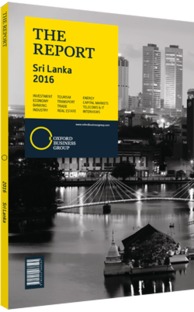Mahesh Amalean, Chairman, MAS Holdings: Interview

Interview: Mahesh Amalean
Are high standards in apparel specific to any country, and are retailers moving towards them?
MAHESH AMALEAN: It is incorrect to say that a specific country does not have high standards. Within any given country you have some manufacturers that meet fairly high standards and others who do not. However, there are countries where a large majority of companies may not hold up high standards and therefore some of the more iconic brands have decided not to do business or be in those countries at all, as they cannot afford to have their brand linked with malpractice. In Sri Lanka, this is reversed, as the majority of companies have high standards, so the country’s reputation, in turn, is strong.
In the future, everyone will want to work with better partners. Costs are going up in all countries, and to work with better partners, manufacturers will have to increase their standards. Five years from now you will see more Bangladeshi companies improving their standards and getting as close as possible to an international level. This will pose a tough challenge for Sri Lanka, even more so because some of these improving countries have established certain trading relationships, giving them access to our traditional trading partners. For example, Bangladesh has a trading relationship with Europe that gives it a concession, and Vietnam is engaging with the US through the Trans-Pacific Partnership. In the past, the playing field was determined primarily by cost. Now the rules are impacted and influenced by trade agreements.
How has Sri Lanka’s niche for apparel manufacturing evolved over time?
AMALEAN: For Sri Lanka we have had no choice but to manufacture for the higher end of the market as the rest of the products were already taken up by other locations. Therefore, in order to attract the customer, we needed to provide solutions of value. Forrelationships with us, our business increased, providing us with the financial resources to make investments and continue to add value.
Currently, we are seeing our industry graduating from mere contract manufacturing to collaboratively working with the customer. In the past, we were used to being provided with everything from material to samples and patterns, and all we did was cut and stitch the product before export. Sri Lanka then moved into product development, by beginning to work with the customer on design, and now we are collectively innovating new products. In the innovation space we are currently looking at bringing new solutions to the consumer, through incorporating certain characteristics into products using new technology. Some of our customers are now working with us in the innovation space through a collaborative approach. This requires close integration between us and the customer, and a high level of trust. We recognise our destiny is, to a great extent, determined by the destiny of the brands we engage with. For this reason, most manufacturers are working on increasing the depth of their relationships with the customer through reducing the number of customers they work with and narrowing their base. The same applies to the purchaser side as well, where they have also narrowed their vendor base and increased penetration.
What reasons are driving some apparel manufacturers to expand regionally?
AMALEAN: Apart from trade advantages, all retailers and brands have a risk profile. There is a certain amount of risk involved in having a single producer in a single country. The brands opt to produce in multiple countries in order to minimise this risk factor. This ensures that if there is an issue in one country, their business will be supported from another country. Therefore, many companies have established manufacturing relationships in multiple locations.
You have reached the limit of premium articles you can view for free.
Choose from the options below to purchase print or digital editions of our Reports. You can also purchase a website subscription giving you unlimited access to all of our Reports online for 12 months.
If you have already purchased this Report or have a website subscription, please login to continue.

